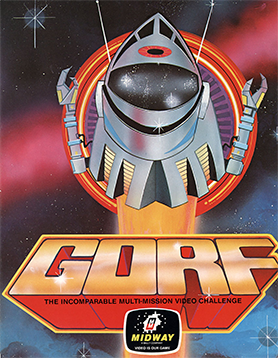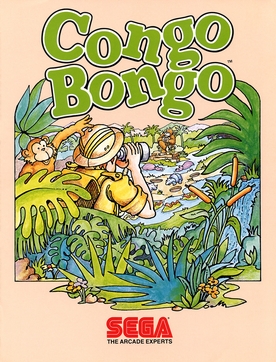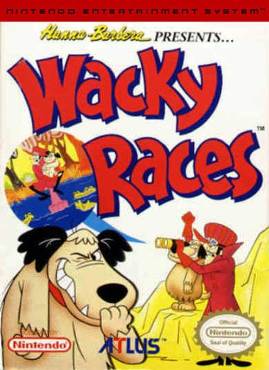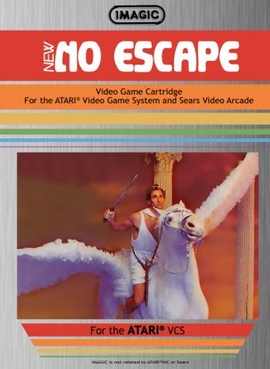
The Atari 2600 is a home video game console developed and produced by Atari, Inc. Released in September 1977 as the Atari Video Computer System, it popularized microprocessor-based hardware and games stored on swappable ROM cartridges, a format first used with the Fairchild Channel F in 1976. The VCS was bundled with two joystick controllers, a conjoined pair of paddle controllers, and a game cartridge—initially Combat and later Pac-Man. Sears sold the system as the Tele-Games Video Arcade. Atari rebranded the VCS as the Atari 2600 in November 1982, alongside the release of the Atari 5200.

720° is a skateboarding video game released in arcades by Atari Games in 1986. The player controls a skateboarder skating around a middle-class neighborhood. By doing jumps and tricks, the player can eventually gain enough points to compete at a skate park. The game's name comes from the "ultimate" trick, turning a full 720° in the air after jumping off a ramp.

Frogger is a 1981 arcade action game developed by Konami and published by Sega. In North America, it was distributed by Sega/Gremlin. The object of the game is to direct five frogs to their homes by dodging traffic on a busy road, then crossing a river by jumping on floating logs and alligators.

Gorf is an arcade video game released in 1981 by Midway Manufacturing, whose name was advertised as an acronym for "Galactic Orbiting Robot Force". It is a fixed shooter with five distinct levels, the first of which is based on Space Invaders and another on Galaxian. The game makes use of synthesized speech for the Gorfian robot which taunts the player, powered by the Votrax speech chip. Gorf allows the player to buy two additional lives per quarter before starting the game, for a maximum of seven lives.

Congo Bongo, also known as Tip Top, is a platform game released as an arcade video game by Sega in 1983. A message in the ROM indicates it was coded at least in part by the company Ikegami Tsushinki. The game is viewed in an isometric perspective, like Sega's earlier Zaxxon (1982), but does not scroll. Numerous home ports followed.

Smurf: Rescue in Gargamel's Castle is a 1982 video game published and developed by Coleco for the ColecoVision and Atari 2600. The game is based on the television series The Smurfs. In the game, the player must brave a series of obstacles to rescue Smurfette from Gargamel's castle.

Keystone Kapers is a platform game developed by Garry Kitchen for the Atari 2600 and published by Activision in 1983. The game involves a Keystone Cops theme, with the player controlling police officer Kelly, who traverses the many levels of a department store, dodging objects to catch the escaped thief Harry Hooligan.

Chopper Command is a horizontally scrolling shooter released by Activision for the Atari 2600 in June 1982. It was written by Bob Whitehead. The player flies a helicopter left and right over a scrolling, wraparound landscape, shooting down enemy airplanes to protect a convoy of trucks below.

Artillery Duel is an artillery game originally written for the Bally Astrocade by Perkins Engineering and published by Bally in 1982. John Perkins wrote the game first in Astro BASIC, submitting it to The Arcadian fanzine, from which it was adapted for the Astro BASIC manual. Perkins subsequently developed the Astrocade cartridge.

Wacky Races is a platform game for the Nintendo Entertainment System, developed and published by Atlus. The game is based on the Hanna-Barbera cartoon Wacky Races and features Muttley and Dick Dastardly as the main characters.

Aztec Challenge refers to either of two early action video games published by Cosmi, as well as two subsequent remakes. In all game versions the player takes control of a running Aztec warrior. The first was a side-scrolling platform-jumping game created by Robert Tegel Bonifacio and released in 1982 for Atari 8-bit computers. Subsequently, a different game with the same title and overall theme was created by Paul Norman and released for the Commodore 64. It includes a level in a modified-first-person 3D-style.

Several video games and genres have been created as a result of the release of the film E.T. the Extra-Terrestrial based on the story and themes of the original game.

Taz is a video game developed and released by Atari, Inc. in 1983 for the Atari 2600. It features the Looney Tunes character the Tasmanian Devil in a food frenzy. Within the game, Taz only appears as a tornado. The same game was later released as Asterix, with the character Asterix instead of Taz.
Krull is an Atari 2600 video game based on the 1983 science fantasy film Krull and published in 1983 by Atari, Inc. It was written by Dave Staugas who later ported Millipede to the 2600. Gottlieb manufactured an arcade shooter of the same name in the same year, but it is unrelated to the Atari 2600 cartridge other than the Krull license.
Bit Corporation was a Taiwanese game developer and console manufacturer.
There have been a variety of Sesame Street video games released for video game platforms. Most of the Sesame Street video games were published and developed by NewKidCo.

Demons to Diamonds is a fixed shooter for the Atari 2600 produced by Atari, Inc. and released in 1982. It was programmed by Nick Turner with graphics designed by Alan Murphy. Nick Turner previously ported Super Breakout to the 2600. The manual states that the game was primarily designed for children in the 6 to 12 age range.

RealSports Tennis is a sports video game developed and published by Atari, Inc. for the Atari 2600, Atari 5200, and Atari 8-bit computers in 1983. It is part of the RealSports series of games.

Gremlins is a 1984 video game developed and published by Atari, Inc. for the Atari 2600. It is a tie-in to the 1984 film Gremlins. Atari released another, substantially different game based on the film for the Atari 5200.

No Escape! is an Atari 2600 video game developed and published by Imagic in 1983. The player controls Jason, leader of the Argonauts, who fights off the Furies sent by the Greek gods. A two-player mode, in which the second player competes against the first turn-by-turn, is also available.


















